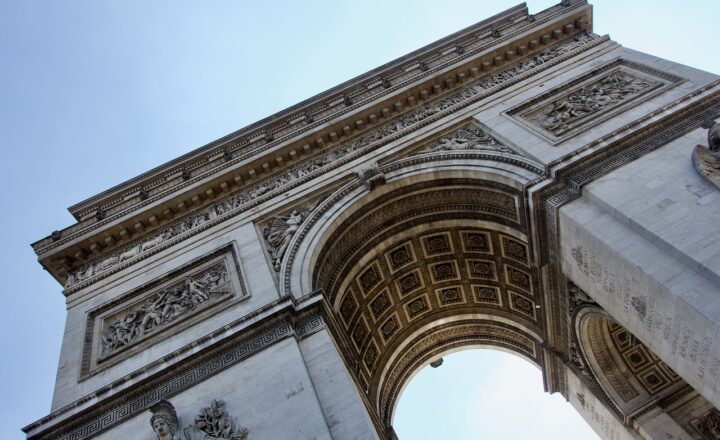
The Leaning Tower of Pisa is one of the most iconic structures in the world, famous not only for its precarious tilt but also for the riveting history that surrounds its construction and stabilization efforts. But one question remains: Why was this remarkable bell tower never completely straightened? In this article, we’ll delve into the architectural, historical, and philosophical reasons that contributed to this decision, exploring its significance in today’s world alongside its intriguing past.
1. A Brief History of the Tower
Construction of the Leaning Tower of Pisa began in 1173 as part of the cathedral complex in Pisa, Italy. The initial design involved a circular tower made of white and gray marble that was intended to stand 60 meters tall. However, just a few years into construction, the builders noticed that the tower began to lean. This was primarily due to inadequate foundation depth, which rested on soft and unstable soil.
As the construction was halted, the subsequent architects and builders attempted to remedy the issue by constructing the upper floors with one side taller than the other. Yet, this was merely a temporary solution that failed to address the core problem. After years of inactivity, construction resumed in 1272 and concluded in 1372, and the result was the distorted yet charming tower we see today.
2. Engineering Challenges and Stabilization Efforts
To understand why the Leaning Tower of Pisa was never straightened, it’s crucial to consider the engineering challenges involved. Over the decades, various stabilization efforts were initiated to prevent the tower from collapsing, particularly in the late 20th century. In 1990, the tower was closed to tourists due to safety concerns, as it had tilted dangerously more than 5 degrees.
Experts devised a series of sophisticated engineering techniques to stabilize the tower. They began by excavating soil from underneath the high side of the foundation, allowing the tower to settle further into the ground. By 2001, these efforts had reduced its tilt from 5.5 degrees to about 3.9 degrees, which was considered a safe structural angle. The stabilization techniques respected the original design and aesthetics, leading to a significant decision: rather than straightening the tower, the goal was to preserve it as a leaning marvel.
3. Preservation of Authenticity and Heritage
Among the key reasons for maintaining the Leaning Tower’s tilt is the concept of authenticity and cultural heritage. The tower is a unique representation of medieval engineering and architectural style that has stood the test of time. Straightening it would fundamentally alter its character, risking the loss of its historical integrity.
Preserving the Leaning Tower as a tilted monument serves as a testament to human ingenuity in grappling with challenges—a story that resonates through the ages. It allows future generations to appreciate the art of construction methods that not only faced adversity but embraced it.
4. Tourist Attraction and Cultural Significance
The Leaning Tower of Pisa is not merely a historical artifact; it is a cultural phenomenon that attracts millions of visitors each year. The tower’s famous lean has become synonymous with the city of Pisa, transforming it into a global tourist attraction.
If the tower were straightened, it would significantly alter the visitor experience. Tourists come to witness the quirky sight of the leaning tower, capturing memorable photos of themselves pushing it back into place or standing beside it in awe. Therefore, retaining its unique tilt enhances its appeal, making it an enduring symbol of Pisa while contributing to its economic vitality.
5. Philosophical and Artistic Perspectives
Beyond engineering and tourism, there are philosophical and artistic perspectives behind the decision to leave the tower leaning. The Leaning Tower of Pisa embodies the idea of imperfection and the beauty in flaws. In art and culture, there is often an appreciation for irregularities and au naturel aesthetics. It mirrors life’s unpredictability, resonating with existential themes of resilience and transformation.
Furthermore, many architects and artists draw inspiration from the tower, using its lean as a canvas for examining balance, gravity, and design. By embracing its tilt, they inspire discussions around innovation and creativity in the context of imperfection.
6. Conclusion: Embracing the Lean
The Leaning Tower of Pisa is more than just a structural anomaly; it is a rich tapestry woven with history, engineering challenges, cultural significance, and philosophical reflections. The decision to leave the tower in its iconic tilted state serves to preserve its authenticity, heritage, and the messages it conveys. Each visitor to the tower is offered a glimpse into not just its architectural story, but a reflection on the beauty of imperfection and resilience in the face of adversity.
In embracing the Leaning Tower of Pisa as it is, we appreciate a unique piece of history that allows us to celebrate its existence as an enduring symbol of creativity, exploration, and the human spirit. So, the next time you visit, remember: what makes the Leaning Tower special is not just its historic significance or visual allure, but the story of how it came to stand defiantly, perfectly imperfect in its place on this earth.








